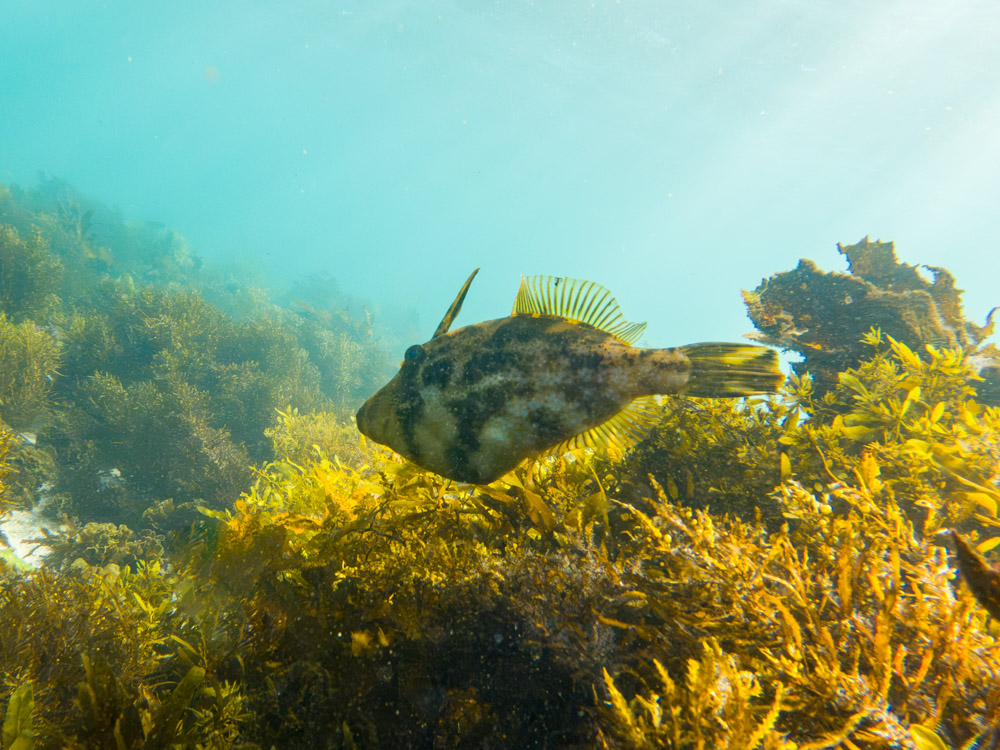The term “leather jacket” does not refer to a single species, but rather to a group of species of fish within the family Monacanthidae. They are also known as filefishes. These fishes are found throughout the world’s oceans, but are particularly common in tropical and subtropical waters. There are approximately 100 different species of leatherjackets found in Australian waters


Leatherjackets have elongated bodies and small, round fins. As their name suggests, their skin is tough and leathery. They are characterized by a single, sharp spine on the upper part of their body, which can be raised or lowered. The purpose of this spine is to deter predators; when it is raised, it makes the fish harder to swallow.
In terms of size, they can range from small species of just a few centimeters to larger ones that can reach up to 1 meter in length. Their coloration varies widely between species, from plain and camouflaged to very brightly colored.
The diet of leatherjackets consists primarily of small invertebrates, although some species also eat algae. They often hide among seaweed and other marine vegetation, using their camouflaged coloring to blend in with their surroundings. Some species are also known to “play dead” to avoid predation, lying motionless on the sea floor until the threat has passed.
They are an interesting species to observe, hiding in the kelp fields at Shelly Beach for example. Getting a good photograph of them can be an interesting challenge!